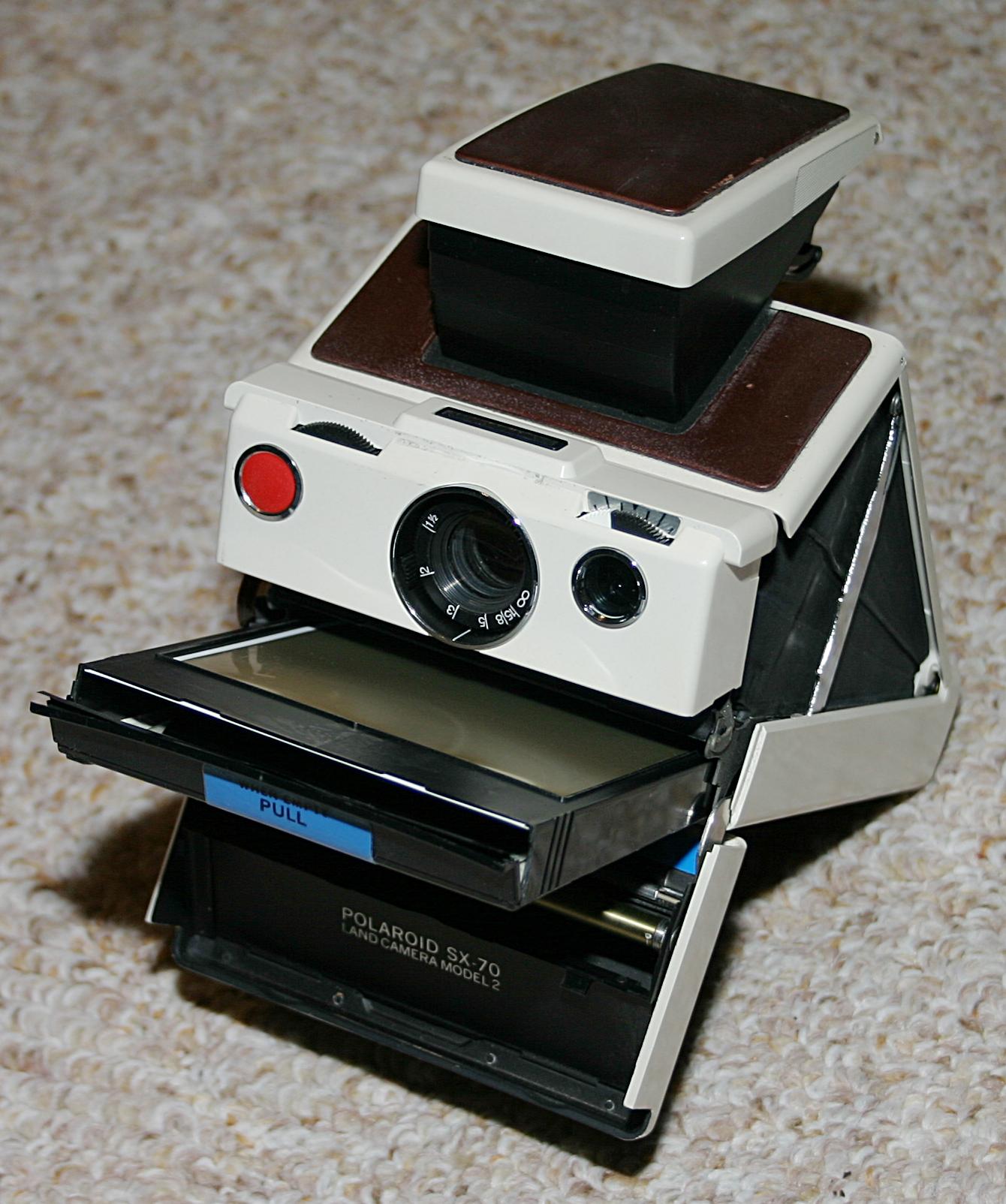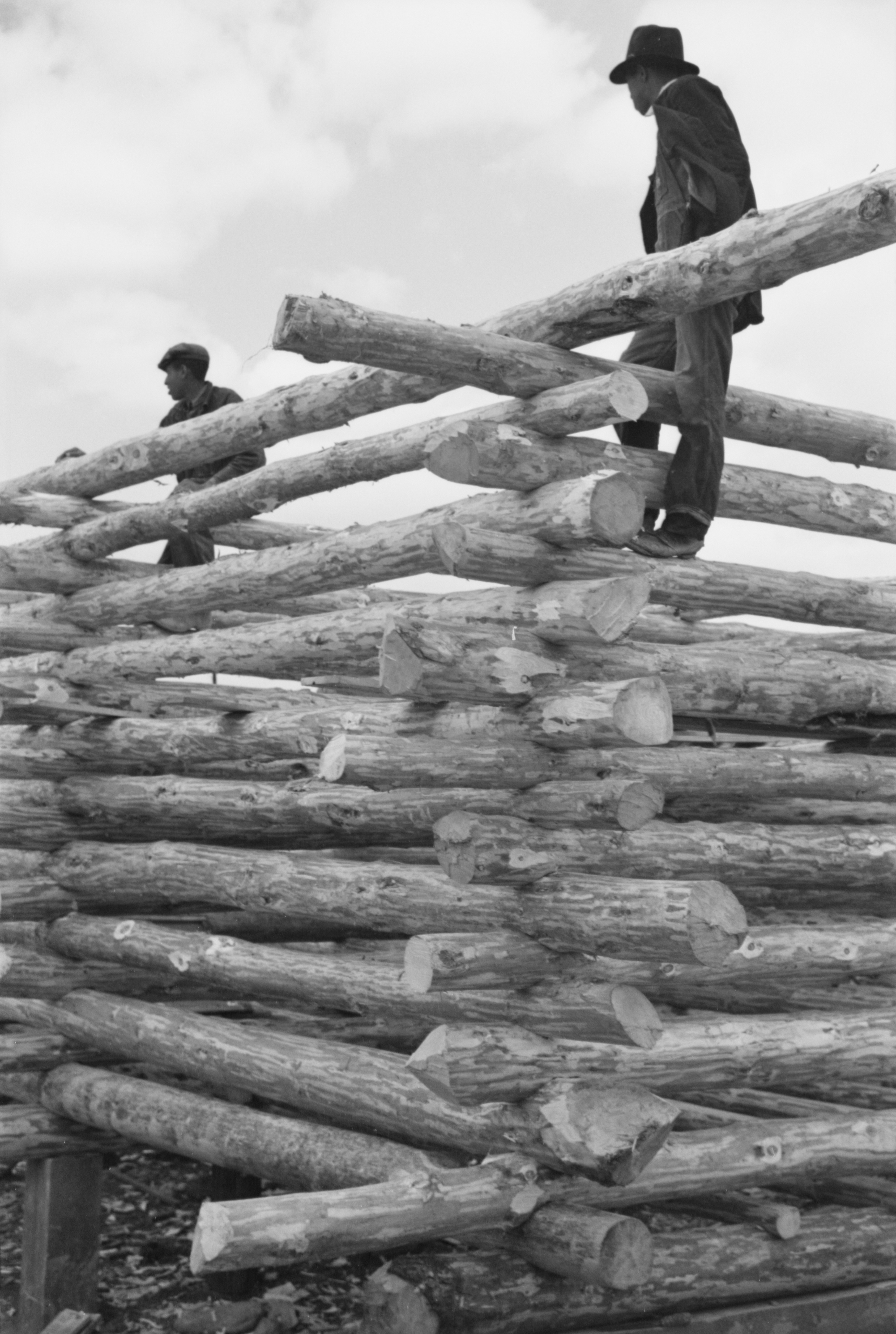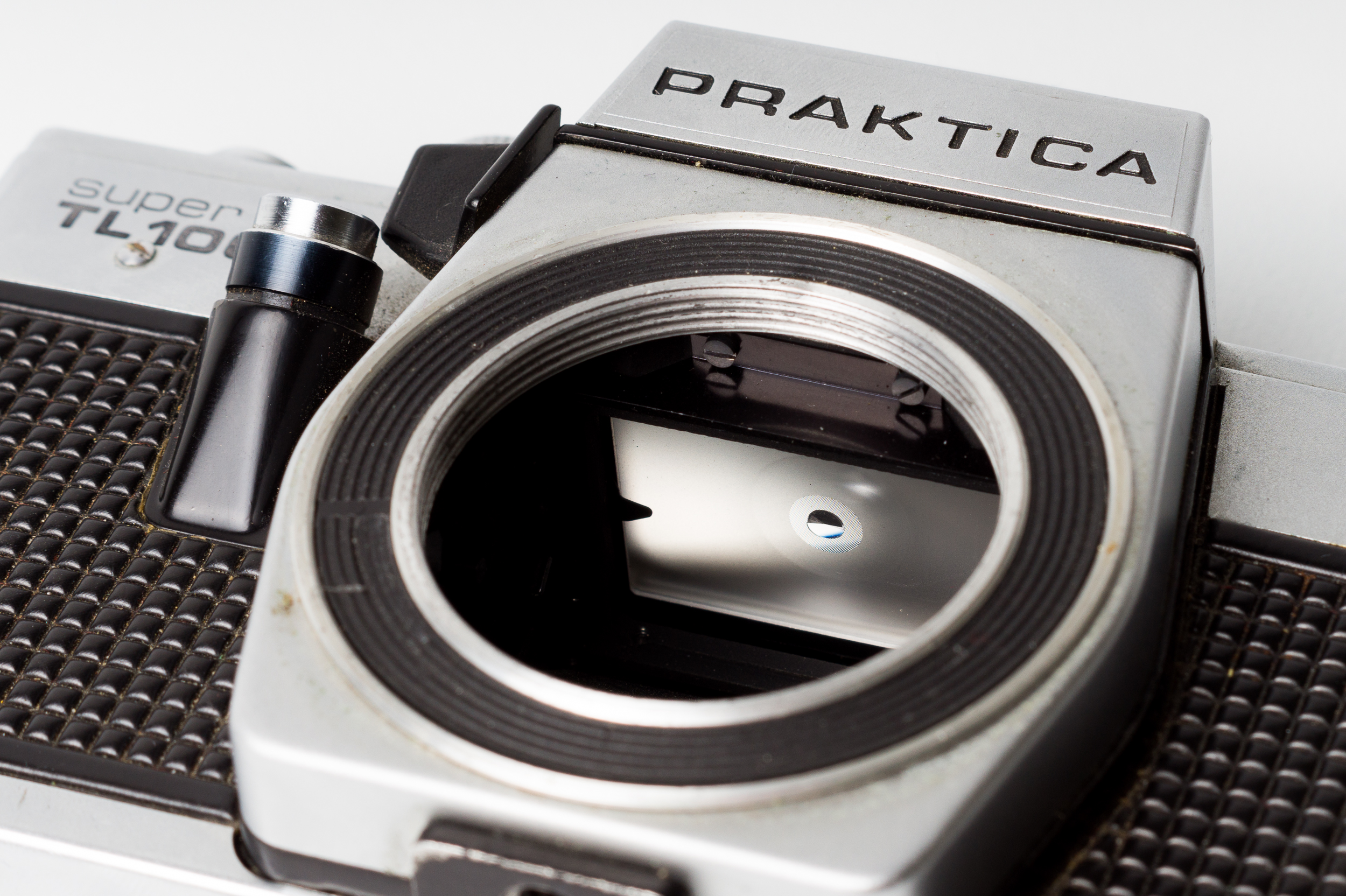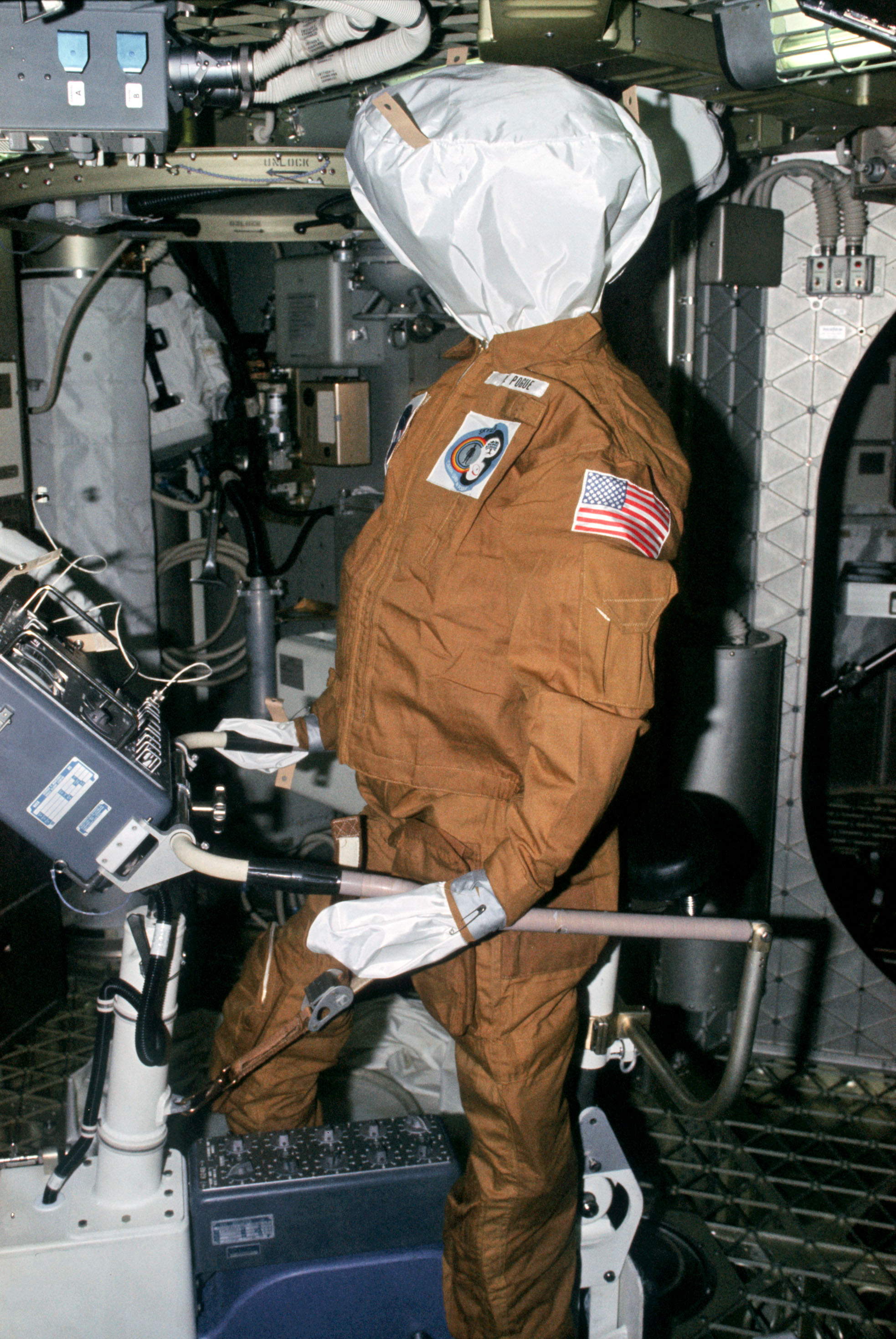|
Polaroid SX-70
The SX-70 is a folding single lens reflex Land camera which was produced by the Polaroid Corporation from 1972 to 1981. The SX-70 helped popularize instant photography. History In 1948, Polaroid introduced its first consumer camera. The Land Camera Model 95 was the first camera to use instant film to quickly produce photographs without developing them in a laboratory. Although popular, the Model 95 and subsequent Land Cameras required complex procedures to take and produce good photographs. The photographic paper for each picture had to be manually removed from the camera and peeled open after 60 seconds to reveal the image which needed to be hand coated with a chemical stabilizer for preservation. The picture required several minutes to dry and the process could leave developing chemicals on the hands. The instructions for the Model 20 Swinger, introduced in 1965, warned that, if not followed, "you're headed for plenty of picture taking trouble". Pictures from the SX ... [...More Info...] [...Related Items...] OR: [Wikipedia] [Google] [Baidu] |
Polaroid Corporation
Polaroid Corporation was an American company that made instant film and cameras, which survives as a brand for consumer electronics. The company was founded in 1937 by Edwin H. Land, to exploit his Polaroid (polarizer), Polaroid polarizing polymer. Land and Polaroid created the first instant camera, the Land Camera, in 1948. Land ran the company until 1981. Its peak employment was 21,000 in 1978, and its peak revenue was $3 billion in 1991. Polaroid Corporation declared bankruptcy in 2001; its brand and assets were sold off. A successor Polaroid company formed, and the branded assets changed hands multiple times before being sold to Polish billionaire in 2017. This acquisition allowed Polaroid B.V., Impossible Project, which had started producing instant films for older Polaroid cameras in 2008, to rebrand as Polaroid Originals in 2017, and eventually as Polaroid in 2020. Since the original company's downfall, Polaroid-branded products in other fields, such as LCD televisions a ... [...More Info...] [...Related Items...] OR: [Wikipedia] [Google] [Baidu] |
Developing Chemicals
Development or developing may refer to: Arts *Development (music), the process by which thematic material is reshaped * Photographic development *Filmmaking, development phase, including finance and budgeting *Development hell, when a project is stuck in development *Development (band), English progressive pop rock band * ''Development'' (album), a 2002 album by Nonpoint Business *Business development, a process of growing a business *Career development *Corporate development, a position in a business *Energy development, activities concentrated on obtaining energy from natural resources *Green development, a real estate concept that considers social and environmental impact of development *Land development, altering the landscape in any number of ways *Land development bank, a kind of bank in India *Leadership development *New product development *Organization development *Professional development *Real estate development *Research and development *Training and development * ... [...More Info...] [...Related Items...] OR: [Wikipedia] [Google] [Baidu] |
Polaroid Land Camera 1000
The Land Camera 1000 is an instant camera manufactured by Polaroid Corporation. In the United States, it was marketed as the OneStep. Based on the Polaroid SX-70, the camera includes a one element 103mm f/14.6 plastic lens, fixed focus and an exposure compensation dial knob. It uses the SX-70 time zero film. There is a flash specifically made for this model: the Q-light flash. They had two unique shutter colors: red and green. History The Polaroid SX-70, while popular upon release in 1972, was considered expensive at a cost of $180. Polaroid eventually created significantly less expensive alternatives: rigid plastic Presto, and the OneStep series. With a release price of $40 (), the Land Camera 1000 became the best-selling camera of the 1977 Christmas shopping season. Later, Polaroid released Type 600 integral series cameras, utilizing the same film format A film format is a technical definition of a set of standard characteristics regarding image capture on photographic f ... [...More Info...] [...Related Items...] OR: [Wikipedia] [Google] [Baidu] |
Walker Evans
Walker Evans (November 3, 1903 – April 10, 1975) was an American photographer and photojournalist best known for his work for the Resettlement Administration and the Farm Security Administration (FSA) documenting the effects of the Great Depression. Much of Evans' New Deal work uses the large format, 8 × 10-inch (200×250 mm) view camera. He said that his goal as a photographer was to make pictures that are "literate, authoritative, transcendent". Many of his works are in the permanent collections of museums and have been the subject of retrospectives at such institutions as the or the [...More Info...] [...Related Items...] OR: [Wikipedia] [Google] [Baidu] |
Helmut Newton
Helmut Newton (né Neustädter; 31 October 192023 January 2004) was a German-Australian photographer. The ''The New York Times, New York Times'' described him as a "prolific, widely imitated fashion photographer whose provocative, erotically charged black-and-white photos were a mainstay of ''Vogue (magazine), Vogue'' and other publications." Early life Newton was born in Berlin, the son of Klara "Claire" (née Marquis) and Max Neustädter, a button factory owner. His family was Jewish. Newton attended the Heinrich von Treitschke, Heinrich-von-Treitschke-Gymnasium (Germany), Realgymnasium and the American School in Berlin. Interested in photography from the age of 12, when he purchased his first camera, he worked for the German photographer Yva (Elsie Neuländer Simon) from 1936. The increasingly oppressive restrictions placed on Jews under the Nuremberg laws, meant that his father lost control of the factory in which he manufactured buttons and buckles. He was briefly inter ... [...More Info...] [...Related Items...] OR: [Wikipedia] [Google] [Baidu] |
Andy Warhol
Andy Warhol (;''Random House Webster's Unabridged Dictionary''"Warhol" born Andrew Warhola Jr.; August 6, 1928 – February 22, 1987) was an American visual artist, film director and producer. A leading figure in the pop art movement, Warhol is considered one of the most important American artists of the second half of the 20th century. His works explore the relationship between artistic expression, advertising, and celebrity culture that flourished by the 1960s, and span a variety of media, including painting, sculpture, photography, and filmmaking. Some of his best-known works include the silkscreen paintings ''Campbell's Soup Cans'' (1962) and '' Marilyn Diptych'' (1962), the experimental film '' Chelsea Girls'' (1966), the multimedia events known as the '' Exploding Plastic Inevitable'' (1966–67), and the erotic film '' Blue Movie'' (1969) that started the " Golden Age of Porn". Born and raised in Pittsburgh in a family of Rusyn immigrants, Warhol initially pursued ... [...More Info...] [...Related Items...] OR: [Wikipedia] [Google] [Baidu] |
Ansel Adams
Ansel Easton Adams (February 20, 1902 – April 22, 1984) was an American landscape photographer and environmentalist known for his Monochrome photography, black-and-white images of the American West. He helped found Group f/64, an association of photographers advocating "pure" photography which favored Deep focus, sharp focus and the use of the full Dynamic range#Photography, tonal range of a photograph. He and Fred R. Archer, Fred Archer developed a system of image-making called the Zone System, a method of achieving a desired final print through a technical understanding of how the tonal range of an image is the result of choices made in Exposure (photography), exposure, Negative (photography), negative development, and Photographic printing, printing. Adams was a life-long advocate for Nature conservation, environmental conservation, and his photographic practice was deeply entwined with this advocacy. At age 14, he was given his first camera during his first visit to Yosemi ... [...More Info...] [...Related Items...] OR: [Wikipedia] [Google] [Baidu] |
Flash Bar
A flash is a device used in photography that produces a brief burst of light (lasting around of a second) at a color temperature of about 5500 K to help illuminate a scene. The main purpose of a flash is to illuminate a dark scene. Other uses are capturing quickly moving objects or changing the quality of light. ''Flash'' refers either to the flash of light itself or to the electronic flash unit discharging the light. Most current flash units are electronic, having evolved from single-use flashbulbs and flammable powders. Modern cameras often activate flash units automatically. Flash units are commonly built directly into a camera. Some cameras allow separate flash units to be mounted via a standardized accessory mount bracket (a ''hot shoe''). In professional studio equipment, flashes may be large, standalone units, or studio strobes, powered by special battery packs or connected to mains power. They are either synchronized with the camera using a flash synchronization cabl ... [...More Info...] [...Related Items...] OR: [Wikipedia] [Google] [Baidu] |
Focusing Screen
A focusing screen is a flat translucent material, either a ground glass or Fresnel lens, found in a system camera that allows the user of the camera to preview the framed image in a viewfinder. Often, focusing screens are available in variants with different etched markings for various purposes. For instance, when photographing landscapes, a focusing screen with a grid allows the photographer to keep the horizon straight. Modern mirrorless cameras do not need a focusing screen since they display what the image sensor sees on a flat-panel display or electronic viewfinder. Overview The history of the focusing screen is almost as long as the history of the camera. Some primitive cameras consisted of a box with a board holding the lens in the front and a focusing screen in the back that was replaced by the imaging medium (plate, film holder) before taking the picture. The most common type of focusing screen in non-autofocus 35 mm SLR cameras is the split screen and microprism r ... [...More Info...] [...Related Items...] OR: [Wikipedia] [Google] [Baidu] |
Skylab 4
Skylab 4 (also SL-4 and SLM-3) was the third crewed Skylab mission and placed the third and final human spaceflight, crew aboard the first American space station. The mission began on November 16, 1973, with the launch of Gerald P. Carr, Edward Gibson, and William R. Pogue in an Apollo command and service module on a Saturn IB rocket from the Kennedy Space Center, Florida, and lasted 84 days, one hour and 16 minutes. A total of 6,051 astronaut-utilization hours were tallied by the Skylab 4 astronauts performing scientific experiments in the areas of medical activities, solar observations, Earth resources, observation of the Comet Kohoutek and other experiments. The crewed Skylab missions were officially designated Skylab 2, Skylab 3, 3, and 4. Miscommunication about the numbering resulted in the mission emblems reading "Skylab I", "Skylab II", and "Skylab 3" respectively. Launch NASA's launch center was located in an area called Cape Kennedy since November 28, 1963. Cape Ken ... [...More Info...] [...Related Items...] OR: [Wikipedia] [Google] [Baidu] |
Skylab 3
Skylab 3 (also SL-3 and SLM-2) was the second crewed mission to the first American space station, Skylab. The mission began on July 28, 1973, with the launch of NASA astronauts Alan Bean, Owen Garriott, and Jack Lousma in the Apollo command and service module on the Saturn IB rocket, and lasted 59 days, 11 hours and 9 minutes. A total of 1,084.7 astronaut-utilization hours were tallied by the Skylab 3 crew performing scientific experiments in the areas of medical activities, solar observations, Earth resources, and other experiments. The crewed Skylab missions were officially designated Skylab 2, 3, and 4. Miscommunication about the numbering resulted in the mission emblems reading "Skylab I", "Skylab II", and "Skylab 3" respectively. Crew Backup crew Support crew * Robert L. Crippen * Henry W. Hartsfield Jr * Karl G. Henize * F. Story Musgrave * William E. Thornton * Richard H. Truly Mission parameters *Mass: about *Maximum Altitude: 440 km *Distance: 24. ... [...More Info...] [...Related Items...] OR: [Wikipedia] [Google] [Baidu] |
Miami, Florida
Miami is a East Coast of the United States, coastal city in the U.S. state of Florida and the county seat of Miami-Dade County, Florida, Miami-Dade County in South Florida. It is the core of the Miami metropolitan area, which, with a population of 6.14 million, is the second-largest metropolitan area in the Southeastern United States, Southeast after Atlanta metropolitan area, Atlanta, and the Metropolitan statistical area#United States, ninth-largest in the United States. With a population of 442,241 as of the 2020 United States census, 2020 census, Miami is the List of municipalities in Florida, second-most populous city in Florida, after Jacksonville, Florida, Jacksonville. Miami has the List of tallest buildings in the United States#Cities with the most skyscrapers, third-largest skyline in the U.S. with over List of tallest buildings in Miami, 300 high-rises, 70 of which exceed . Miami is a major center and leader in finance, commerce, culture, arts, and internation ... [...More Info...] [...Related Items...] OR: [Wikipedia] [Google] [Baidu] |









